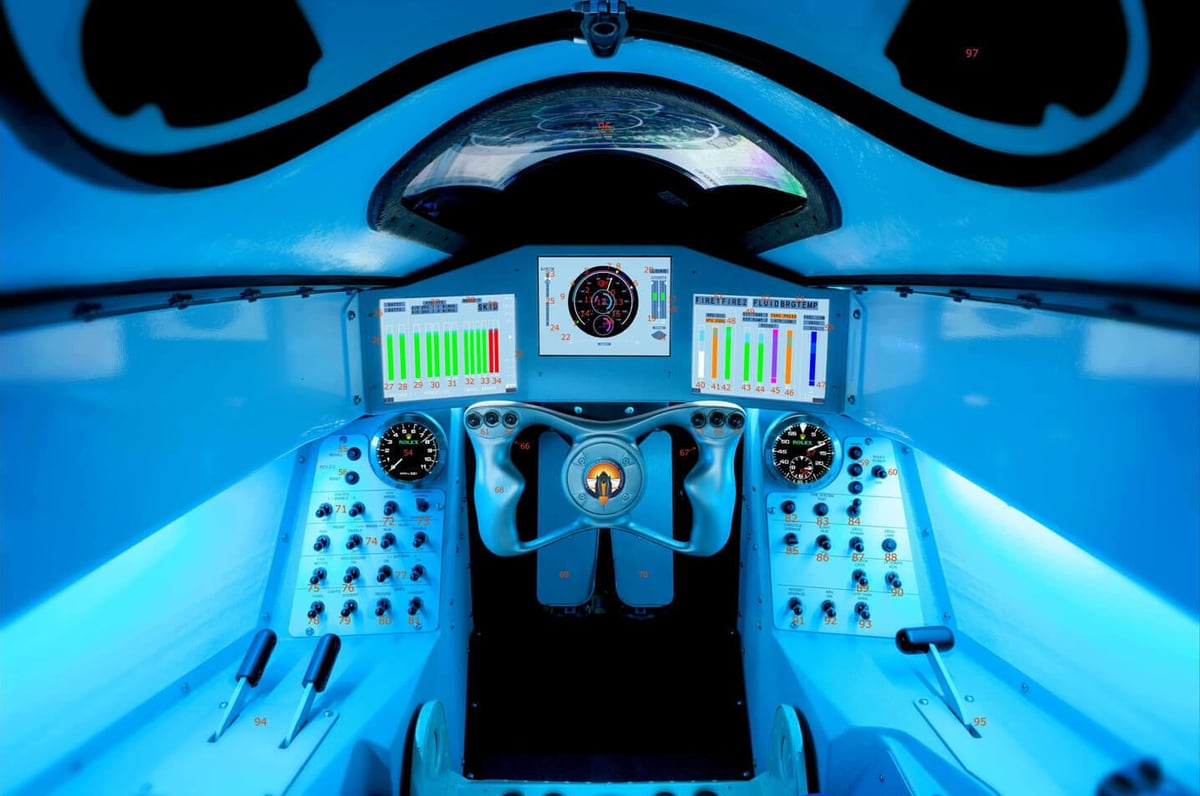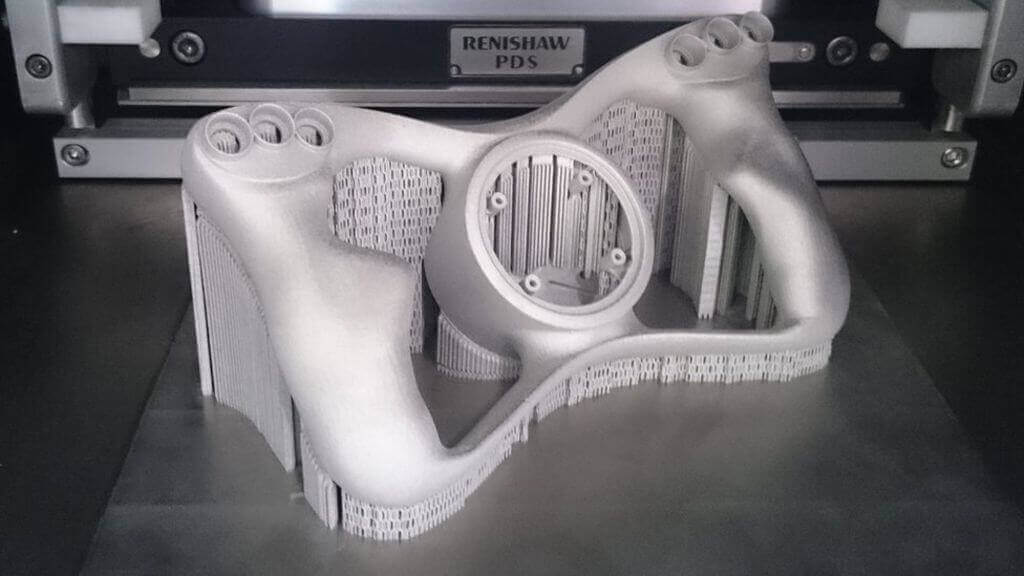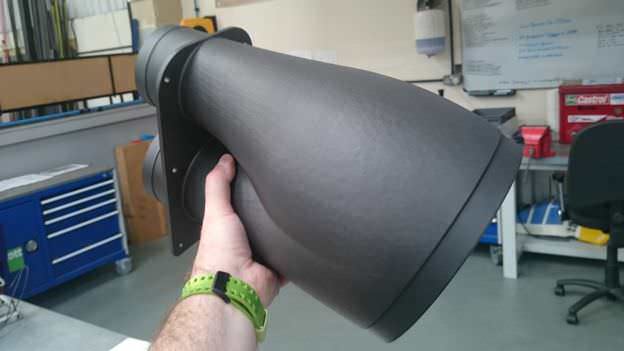The curtain was lifted on the Bloodhound Super-Sonic Car this week. Many of its components were fabricated using 3D printing technology.
The makers plan to set a new land speed record in South Africa in 2016. The current record stands at 763 mph (1,228km/h) and was set by another British car in 1997, the Thrust SSC.
There are many innovative technologies used in its construction, not least of which are 3D printed parts that — given the completely unique nature of the car — are too expensive and wasteful to produce by conventional means.
The steering wheel in the cockpit is precisely moulded to the hands of the driver, former RAF Tornado Pilot Andy Green, and will be 3D printed from powdered titanium.
“We’ve actually used a scan of Andy’s hand form, and if I machined that it would take an awfully long time,” Bloodhound components chief Conor La Grue told the BBC. You can see the steering wheel in the picture below.
British firm Renishaw PLC of Wotton-under-Edge are building the steering wheel. The final version will be fabricated in the next few weeks, and will take three to four days to produce at the Gloucestershire company’s factory.
They use a powerful laser to fuse metal particles together on the micron-scale, building the steering wheel layer by layer.

More 3D printed parts in the Bloodhound Super-Sonic Car
Other printed parts include the auxiliary air intakes, made from carbon-fiber, which sit on both sides of the car. These intakes channel air into the rear of the vehicle to cool a Jaguar V8 engine and a rocket pump system.
The intakes were made using laser sintering by another British company, Graphite Additive Manufacturing of Aylesbury, where single layers of carbon are fused together to form complex shapes.
Finally, the sensor brackets have been fabricated from powdered ceramic. With over 500 sensors to monitor changes in air pressure, chassis flex and movement in components, the Bloodhound Super-Sonic Car has more than twice as many sensors as an F1 car.
La Grue emphasises that component printing was used only where the design team saw a genuine benefit. “Additive is great for a one-off, complex part, so for Bloodhound it’s a really good way to save on tooling and machine holding, but if the properties in the component aren’t there, we won’t use it.”
Image credits: Bloodhound SSC
License: The text of "3D Printing Steers the Bloodhound Super-Sonic Car" by All3DP is licensed under a Creative Commons Attribution 4.0 International License.

